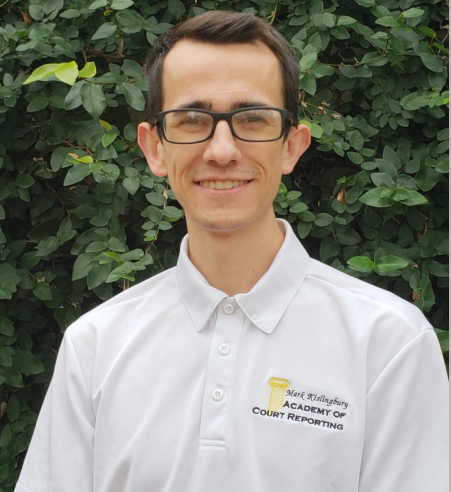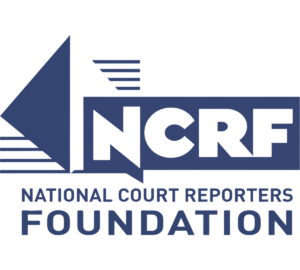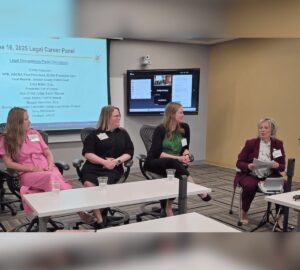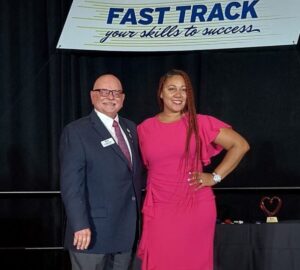By Logan Kislingbury

In late May, I had the pleasure of introducing stenography to a class of freshmen students of sociology at Fu Jen University in Taiwan. I was vacationing there when a good friend of mine, who is a professor at the university, invited me to teach one of her classes about stenography and my life as a court reporting student.
The students had never heard of stenography or seen a steno machine before, and the curiosity on their faces was showing. I started out by explaining why we use steno machines, which is to capture the spoken word and accurately transcribe it. To do this at high speeds, writing one letter at a time, such as on a QWERTY keyboard, wouldn’t be possible.
I opened my CAT software and overlaid my live stroke monitor on the screen. This is a Lightspeed feature that shows a live view of your keys, which change color when pressed. I showed how the keyboard had multiples of certain letters such as S, D, and R, and lacked other letters, like Q or M. I explained how we use multiple keys to write letters that the machine is missing.
Then, I wrote some basic sentences, and the students were enthused by how entire words could come up instantly. I then showed them phrases such as at that time, do you remember, and would you agree. They now understood how we can keep up with speakers by writing entire words and phrases instantly.
Next, I wanted to show off the upper limits of briefing and phrasing. I showed them the popular phrase “ladies and gentlemen of the jury” in one stroke. For the coup de grâce, I asked who knew the longest English word. To my surprise, one girl actually knew it and pronounced it well. I asked the class to guess how long it would take me to write this word. After seeing my previous demonstrations, they knew it would be fast. Some guessed 5, 10, 15 seconds. I quickly stroked my way of writing pneumonoultramicroscopicsilicovolcanoconiosis, which is NAOUM/NAOUM. In less than half a second, the longest English word popped up on the screen to the amusement of the students.
Lastly, I wanted to show the students how we aren’t limited to only writing words we know. My Chinese skills are very limited, but I asked for a volunteer to slowly speak Chinese to me for about 15 seconds. I sounded out what I heard as best as I could and read back from my steno notes. Apart from the tones, I read back nearly exactly what the student had said. I understood less than half of it, but apparently I did well because the class burst into a surprised applause.
After I was finished, students came up to look at the machine and ask some questions about steno. I couldn’t believe how interested they were! It was such a wonderful experience to show them, and maybe they’ll be able to work with steno in the future.
Logan Kislingbury is a court reporting student attending the Mark Kislingbury Academy of Court Reporting in Houston, Texas. He can be reached at logankislingbury@gmail.com.











